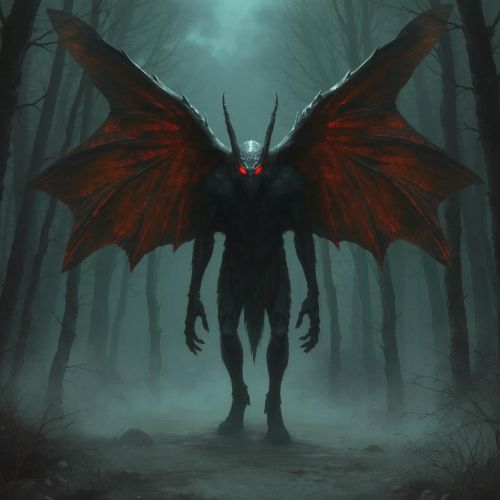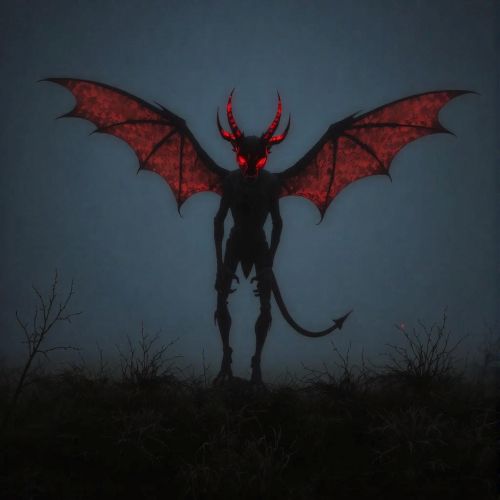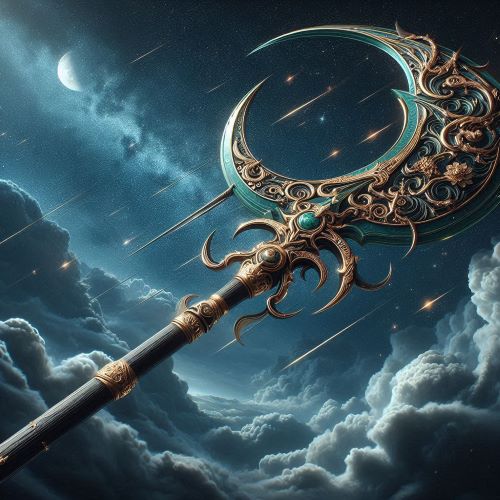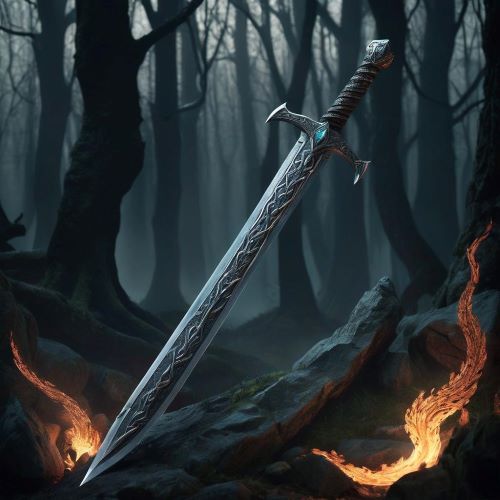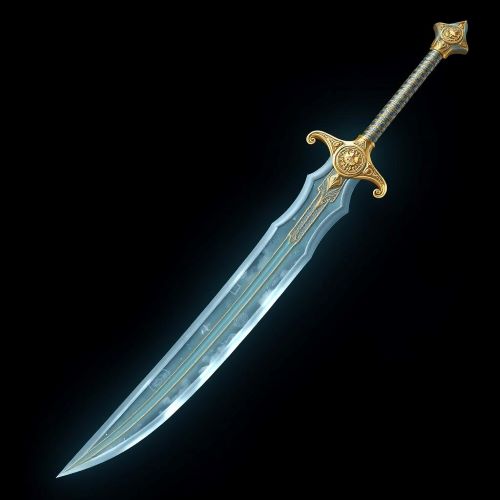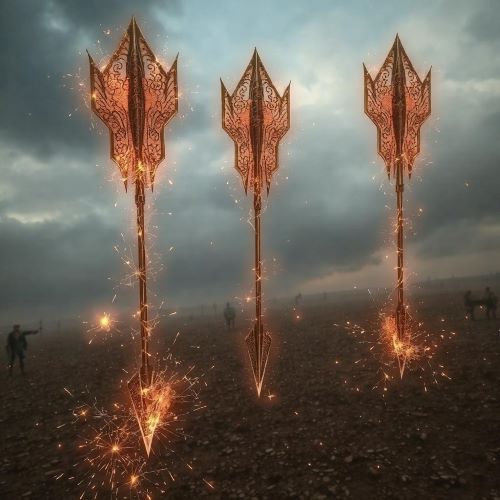Kampilan : The Infallible Blade
Kampilan
Introduction
The Kampilan is a legendary sword deeply rooted in Philippine history and mythology. Wielded by warriors of the southern Philippines, it stands as a symbol of bravery, strength, and martial tradition. With its distinctive design and fearsome reputation, this weapon has been immortalized in folklore and epic tales.
Beyond its role in battle, the Kampilan represents a legacy of resistance, identity, and cultural pride. This blog delves into its origins, supernatural attributes, legendary wielders, and the lasting impact it holds in Philippine heritage.
Origins
The Kampilan has its roots in pre-colonial Philippines, where it was wielded by indigenous warriors and noble leaders like the datus. Historical accounts suggest it played a role in significant battles, including the legendary clash at Mactan in 1521, where Lapu-Lapu is believed to have used it against Ferdinand Magellan.
More than a weapon, the Kampilan showcases the artistry of Filipino blacksmiths. Its long, single-edged blade widens towards the tip, making it a formidable tool for combat. The hilt often features intricate carvings, with pommels shaped like mythical creatures such as the Bakunawa, a serpent from local folklore. These decorative elements not only enhance its aesthetic appeal but also symbolize power, status, and deep cultural ties.
Think you know your myths and legends? Dive into the world of ancient stories and test your knowledge with our engaging quizzes on Mythlok!
Powers
In Filipino mythology, the Kampilan is more than just a blade—it is a conduit of supernatural power and ancestral protection. Legends speak of warriors who wielded it gaining extraordinary strength, with some even believed to be impervious to harm. Rituals performed during its forging were thought to infuse the weapon with spiritual energy, linking it to the wisdom and guidance of ancestors.
A unique aspect of the Kampilan’s mythos is its connection to celestial forces, particularly the Bakunawa, a serpent-like creature said to control cosmic events. Warriors invoking its power were believed to channel its might, gaining an edge in battle. Some tales even suggest the sword could slice through anything, from armor to stone, making it a feared and revered weapon both in physical and spiritual warfare.
Owners/Users
Throughout Philippine history and mythology, the Kampilan has been wielded by legendary figures known for their bravery and leadership. Lapu-Lapu, the famed datu of Mactan, is perhaps its most well-known bearer, his victory over Magellan cementing the sword’s status as a symbol of resistance. Similarly, Rajah Sulayman, a fierce opponent of Spanish colonization, is often depicted with a Kampilan, underscoring its association with power and defiance.
Beyond historical warriors, the Kampilan appears in epics and folklore. Rajah Indarapatra, a hero of the Maranao people, is said to have used it to vanquish monstrous threats, reinforcing its mystical reputation. Datu Marikudo, the legendary chieftain of the Ati, is also linked to the Kampilan, wielding it to defend his people’s sovereignty. Whether in history or mythology, this iconic sword embodies strength, leadership, and the enduring spirit of resistance.
Instances used
The Kampilan has played a crucial role in both historical battles and mythological narratives across the Philippines. It was widely used in military encounters, valued for its effectiveness in both individual duels and large-scale warfare. Warriors prized its long, single-edged blade for powerful slashing and thrusting techniques, making it a dominant weapon in pre-colonial combat. Additionally, some indigenous groups employed the Kampilan in headhunting rituals, elevating its status beyond a mere tool of war to a symbol of prestige and warrior prowess.
Beyond the battlefield, the Kampilan features prominently in Filipino epics and oral traditions. In the Maranao legend of Indarapatra at Sulayman, Rajah Indarapatra wields a Kampilan to defeat fearsome monsters terrorizing his land. Similarly, in the lore surrounding the Battle of Mactan, it is believed that Lapu-Lapu and his warriors used the Kampilan to overcome Spanish forces, turning it into a lasting emblem of resistance. Today, the Kampilan remains an essential part of Filipino martial heritage, showcased in cultural festivals and martial arts demonstrations that keep its legacy alive.
Frequently Asked Questions
Lorem ipsum dolor sit amet, consectetur adipiscing?
Lorem ipsum dolor sit amet, consectetur adipiscing elit. Praesent convallis vestibulum justo, ac tincidunt nunc vehicula quis. Nullam id dolor quis orci malesuada feugiat. Curabitur aliquet libero at urna ullamcorper, ac ultricies nulla dapibus.
Lorem ipsum dolor sit amet, consectetur adipiscing?
Lorem ipsum dolor sit amet, consectetur adipiscing elit. Praesent convallis vestibulum justo, ac tincidunt nunc vehicula quis. Nullam id dolor quis orci malesuada feugiat. Curabitur aliquet libero at urna ullamcorper, ac ultricies nulla dapibus.
Lorem ipsum dolor sit amet, consectetur adipiscing?
Lorem ipsum dolor sit amet, consectetur adipiscing elit. Praesent convallis vestibulum justo, ac tincidunt nunc vehicula quis. Nullam id dolor quis orci malesuada feugiat. Curabitur aliquet libero at urna ullamcorper, ac ultricies nulla dapibus.
Lorem ipsum dolor sit amet, consectetur adipiscing?
Lorem ipsum dolor sit amet, consectetur adipiscing elit. Praesent convallis vestibulum justo, ac tincidunt nunc vehicula quis. Nullam id dolor quis orci malesuada feugiat. Curabitur aliquet libero at urna ullamcorper, ac ultricies nulla dapibus.
Lorem ipsum dolor sit amet, consectetur adipiscing?
Lorem ipsum dolor sit amet, consectetur adipiscing elit. Praesent convallis vestibulum justo, ac tincidunt nunc vehicula quis. Nullam id dolor quis orci malesuada feugiat. Curabitur aliquet libero at urna ullamcorper, ac ultricies nulla dapibus.



